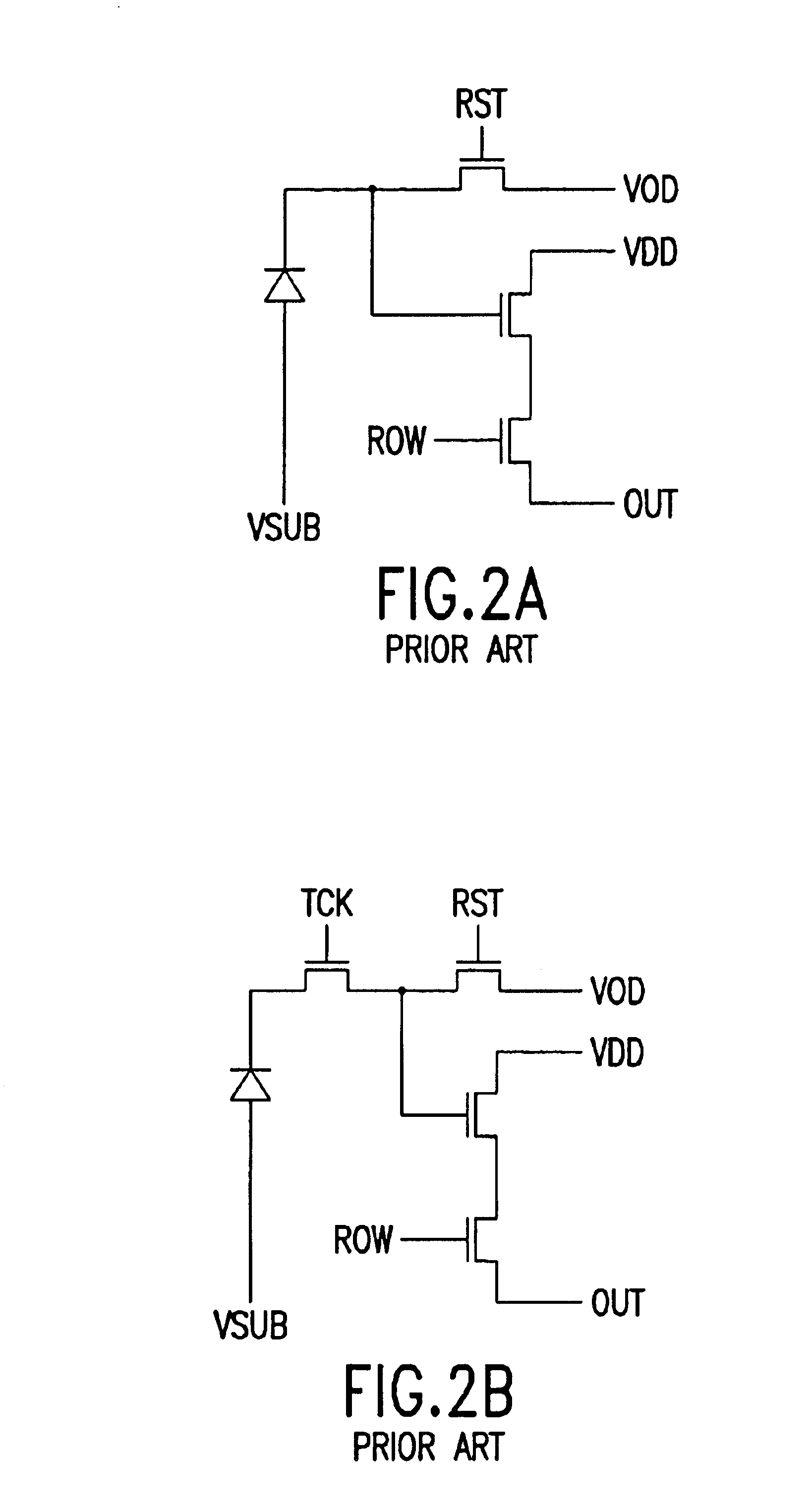Five transistor CMOS pixel
- Summary
- Abstract
- Description
- Claims
- Application Information
AI Technical Summary
Benefits of technology
Problems solved by technology
Method used
Image
Examples
Embodiment Construction
In FIG. 1, a new pixel includes a light shield (not shown in FIG. 1 for clarity) overtop of a sense node (i.e., junction 18) and exposure control gate transistor 22 off of the photosite. The sense node (junction 18) includes the diode region between reset gate transistor 20 and transfer gate transistor 16. However, the light shield (not shown in the circuit schematic for clarity) prevents generation of photo charge in the sense node. Advantages of this pixel are that the pixel can be implemented in such a way that the “rolling shutter” problem associated with conventional CMOS image sensors can be eliminated while at the same time allowing for antiblooming (AB) operation and electrode exposure control (EC) operation. The new pixel is a 5-transistor architecture (“5T”). In contrast, a “4T” pixel can be operated to either eliminate rolling shutter problem or allow for AB / EC functionality, but not both at the same time.
Another feature of the 5T pixel is the specific timing and biasing ...
PUM
 Login to View More
Login to View More Abstract
Description
Claims
Application Information
 Login to View More
Login to View More - R&D
- Intellectual Property
- Life Sciences
- Materials
- Tech Scout
- Unparalleled Data Quality
- Higher Quality Content
- 60% Fewer Hallucinations
Browse by: Latest US Patents, China's latest patents, Technical Efficacy Thesaurus, Application Domain, Technology Topic, Popular Technical Reports.
© 2025 PatSnap. All rights reserved.Legal|Privacy policy|Modern Slavery Act Transparency Statement|Sitemap|About US| Contact US: help@patsnap.com



